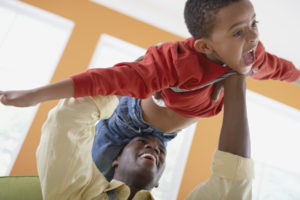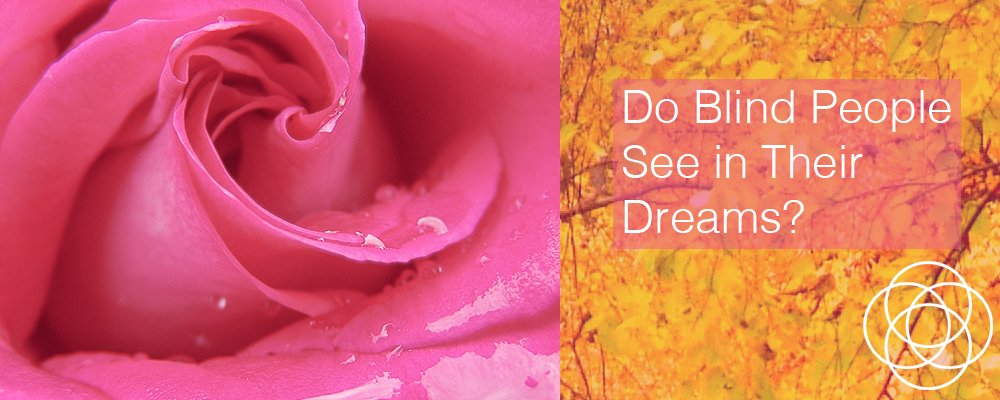“I’m quadriplegic,” said the caller to a dream segment I was hosting on radio many years ago, “but in my dreams I can run and dance, and I’m devastated when I wake up and remember that I can’t.”
Before his accident, he had enjoyed running and dancing, and he could draw on his sensual and spatial memories to experience those freedoms in his dreams.
Does the same apply to people who have become blind, or deaf, and can people who were born blind see in their dreams? Does the visual region of a congenitally blind person’s brain create images for dreams, as it does for sighted people whose closed eyes are not sending sight data to the brain while dreaming?
As you’ve probably guessed, the congenitally blind do not see images in their dreams because they cannot draw on personal experience. Their dreams reflect their more highly developed non-visual sensory experiences of life. In place of images, they dream of sound, touch, smell, taste, and, for those who have developed the skill, echolocation. They dream of the picture of the world they have built using their predominant senses. They picture the world, but not in visual images.
While we sleep, we process the last 24-48 hours of our conscious and unconscious experiences, and we experience this processing as dreams. So our dreams reflect the last couple of days, as our brain and mind work at making sense of the world. We each build our unique pictures of the world as we experience it, and awaken each morning to an updated view, mental map, or mindset. As this processing takes into account all our past experiences, it tends to consolidate our mindset rather than change it.

We draw on our experiences to imagine what it might be like to fly, and we can experience that imagined sense of flying in our dreams.
Sighted or blind, our dreaming brains get creative during sleep. We imagine flying, being the opposite sex, living in an underwater palace, having a pet dog of a breed that doesn’t exist in waking life, talking to a celebrity we haven’t met, being chased by an impossible monster, or just about anything. People who have been blind since birth can dream of what they imagine seeing to be, just as we can all dream of what we imagine flying, or talking to that celebrity, or being chased by that impossible monster might be like. We draw on our experiences of dancing or flying in a plane or trampolining to imagine what it might be like to fly, and we can experience that imagined sense of flying in our dreams. And it feels absolutely real because that’s the nature of dreams.
People who have been blind since birth can – if it’s important to them – dream of what they imagine seeing to be like, or dream of what they imagine objects or people to look like based on their own acutely developed senses and the descriptions of those who can see, but the visual region of the brain is not engaged. They are not able to access visual memories to replay or build upon creatively. It’s interesting to note that their eye movements are weak or non-existent during REM sleep, adding weight to research that suggests that eye movements during REM sleep are associated with watching dream action.
Sighted people might dream of being able to echolocate, but such a dream experience is imagined, and while it may feel real in the dream, it is not real in the sense that a blind person who has developed echolocation to navigate in waking life would dream the sensation.
Sighted people can and do dream sounds, smell, touch, and taste, but visuals are the predominant dream sense, with about half of all dreams (according to research) including sound, but less than one percent of all dreams including smell, touch or taste. (You can train yourself to engage your other senses in dreams by paying more attention to them in waking life.) Some research suggests that congenitally blind people’s dreams include 45% sound and 55% combined taste, smell, and touch.
What about people who become blind? The research shows that people who become blind after the age of seven remain able to see in their dreams, though the emphasis on sight may decline as other senses become predominant, and, I imagine, more interesting and relevant. Those who lose their sight before the age of five seem to also lose the ability to see in their dreams, and that leaves a couple of years, from age 5-7, where continuing to see in dreams may reflect individual development at the time of sight loss.
People whose vision has been blurred from birth dream of blurred images, people who have been deaf from birth do not hear in their dreams, and the colourblind are equally colourblind in their dreams.
All of which serves to remind us that our dreams reflect our waking life experiences – conscious and unconscious – in symbolic and metaphoric form, and in all the sensual shades and tones of meaning that are personally relevant to us as unique human beings searching to make sense of our worlds, night by night, dream by dream.


